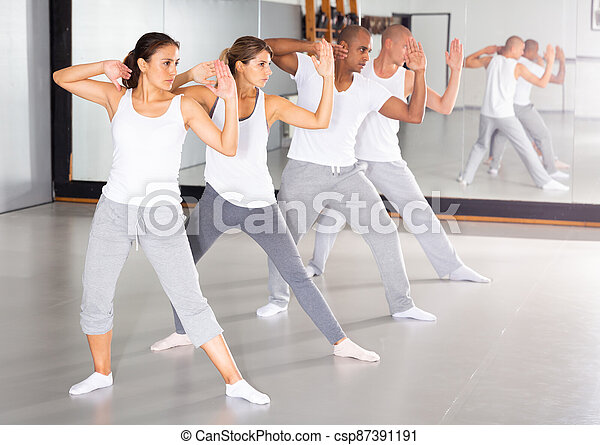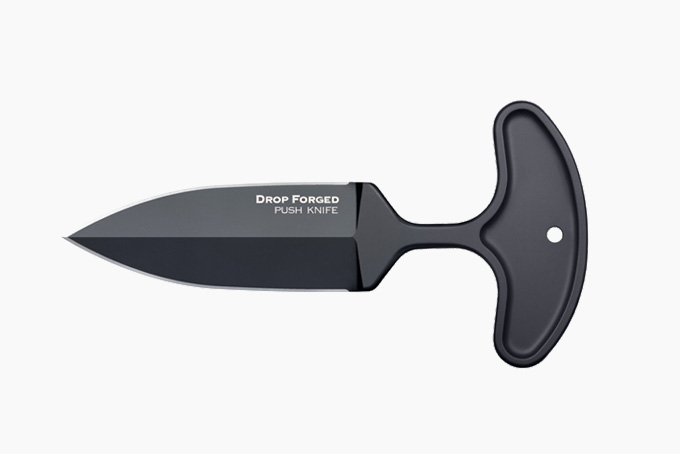
How to defend yourself shouldn't be about beating your attacker. It should be about how to prevent it from happening. Ninjas view violent crime in terms of a clearly defined process and clear stages. This understanding is what makes self defense work. It is the same concept applied to self-defense training, but applied to a more practical context. Here are some questions to ask yourself before beginning a ninja self defense course.
Alternatives to ninja self-defense
There are several alternatives to Ninja Self Defense for Peaceful People. If you're looking for a comprehensive, yet affordable way to learn self defense, then this course may be a good choice. It's written by Chris Martins, the creator of a program that's based on ninjutsu and other martial arts. The course is available for free download. However, beware of suspicious sites that may try to infect you computer.
A video training course can be used as an alternative to NSDFPP. This video course, which is free to download, features a community for students to interact with instructors as well as fellow students. If you are not satisfied with the course, there is a money back guarantee. The content isn't clear enough to make anyone confident in their abilities to defend themselves. Other self-defense courses are available for those who prefer a classroom environment.
The self-defence techniques of the Ninja
Ninja Self-Defence Techniques is a comprehensive martial arts training program for self-defence. It teaches mental discipline and practical techniques. It includes instruction for grappling, throwing (choking), joint-locking and striking. These methods are realistic and practical and are based on years of teaching and training. Ninja training goes beyond physical combat. It teaches people to have "real-time awareness" about their surroundings.

Watching an aggressor is the first principle of ninjafire interception. Respond quickly. You can use a lead punch to stop an attacker moving forward. You can then continue forward to catch your attacker behind the neck. To pull the aggressor's legs back, you can use a knee strike to his midsection after you have caught him. This technique can also be used to throw the aggressor away.
Cost of ninja self defense classes
Prices for Ninja Self-Defense classes vary by location. In general, lessons can cost between $30 and $80. Private lessons take up more of the teacher's time so the cost will go up. But it's well worth it to protect yourself and gain confidence. In fact, many people who have taken the class are now self-defence experts, and their skills have saved them from various situations.
Practical self-defense and combat tactics can be learned in a ninja school. The classes come in three different packages that offer the best combination of mind-body control, weapon training, self-defense strategies, and mind-body mastery. A variety of weapons can be learned, including a knife, bo and sword. You can also learn jujitsu (a Japanese style for karate) and the ancient Japanese sword.
You will need to be supervised by a certified instructor in order to learn ninjutsu
Ninjutsu, an ancient art, is a great place to learn self-defense. This ancient art includes basic and advanced self-defense techniques. These techniques are combined with modern mixed martial arts exercises to create an effective self-defense system. Private lessons can be taken or you may enroll in a class. Whether you choose to take the private lessons or join a group class, the instructors will teach you the basics of self-defense and the techniques used to execute them.

You may need to be certified in martial arts for some programs. After you've completed an in-person course and learned the techniques, you can apply for instructor training. Some certification programs require that your martial art or black belt be completed. Some programs will accept substitutes such as law enforcement or personal training experience. You will need to pass an extensive background check.
FAQ
Do I have the obligation to exercise every day or just on occasion?
No! Do at least 30 minutes of moderate intensity physical activity five days a week. That means walking fast enough to be slightly out of breath or biking hard enough to sweat.
How many times a week should I exercise?
It depends on what type of exercise and how much time are available. The general rule of thumb is to exercise aerobically 3 - 5 days per week. Don't go overboard. You will get the maximum benefits from your workouts if you do not exercise consistently.
Which exercises are best suited for me?
It really depends on what kind of fitness goals you have. Some people prefer endurance sports like swimming, cycling, or running. Others like lifting weights or using resistance band. There are many exercise programs on the market today. Select the one that best suits your needs.
What is your favorite workout order?
It all depends on what you're looking for. First, lift heavy weights if you are looking to increase muscle mass. Next, you can move onto cardio. Then if you want to lose weight, go from cardio to strength training.
Cardio can be done if you want to just lose fat. Add strength training to your workouts.
You should do cardio last if your goal is to increase muscle mass. This stimulates growthhormones, which helps build muscle mass.
You should also eat before your workout. You will be able to give your muscles more fuel so they can work harder. This will make you feel better while working out.
What is a good seven-day workout routine?
A seven day exercise program should include cardiovascular training (running or biking), strength exercises (using freeweights, weight machines) and one flexibility/core workout. Each activity must be completed at least once per week. Each session should not last more than 45 minutes.
Cardiovascular Exercises: Swimming, Cycling, Running
The goal is to get in at least 60 minutes of cardio activities per week. To achieve the best results, aim to exercise for at least 75 minutes each week. Cardio exercises can increase blood flow and stimulate the growth of muscles.
Strength Training
Cardio exercises target the heart, lungs and muscles. Strength training targets the muscles, tendons and bones. Strength training increases lean muscle mass and helps to burn calories even at rest.
Flexibility & Core Workouts
Core and flexibility exercises are great ways of strengthening your whole body. Both yoga and Pilates can be great choices.
What dietary supplement is best for weight loss?
Exercise and diet are key to losing weight. However, some people find that certain supplements help them along the way.
Studies have shown that omega-3 fatty acid may be beneficial in weight loss. Omega-3s, essential fats, are critical for brain function and cell membrane health. They can be found as a part of seafood such as tuna, salmon, shrimp, and cod live oil.
Other research suggests that green tea might be beneficial for weight loss. The antioxidants in green tea, catechins and other compounds may increase metabolism and promote weight loss.
Can I consume alcohol while working out?
Yes. Alcohol increases energy expenditure, speeds up recovery times, and reduces soreness.
It also increases insulin sensitivity. This makes it easier and faster to absorb glucose.
Alcohol can also cause dehydration which can lead to a slower metabolism. You may also experience a reduction in testosterone production which can lead to decreased muscle-building potential.
This is why women shouldn't have alcoholic drinks before exercising. Women who drink heavily should wait at LEAST 24 hours before they start working out.
It is important that women who are nursing avoid alcohol.
Men should limit their alcohol intake to just one drink each day.
What's a good routine for a daily workout?
You must exercise regularly to stay fit. It doesn't matter which type of fitness you choose, as long as it is done regularly. Consistency is key. For you to get results, you have to stick with it for a longer period of time.
Begin by starting to do a little bit of physical activity each day (like walking). You can gradually increase the amount of exercise you do until you have 30 minutes each day. You can do this running, swimming weight training, yoga or aerobics classes.
You should try to ensure that you exercise most days of the week. Don't miss any sessions unless you have an excuse.
If you exercise outside, ensure that you wear appropriate clothing and footwear. You also need to consider the weather conditions and whether they affect your ability to exercise safely.
When exercising, ensure you drink lots of water. Drinking alcohol at this time can lead to dehydration. Also, avoid caffeinated drinks such as coffee, tea, and cola. They can provide energy, but they also dehydrate.
At first, it's normal to feel tired after you finish your exercise routine. If you stick with your training program, you'll feel more awake and alert.
Statistics
- Are You One of the 20% of Guys (mh.co.za)
- Get free shipping and 25% off today. (healthline.com)
- The PRS enabled risk stratification for overall prostate cancer and lethal disease with a four-fold difference between men in the highest and lowest quartiles (HR, 4.32; 95% confidence interval [CI], 3.16-5.89). (pubmed.ncbi.nlm.nih.gov)
- Candidates and applicants must pass all four tests at 70% (minimum level) to graduate from Basic Deputy U.S. Marshal (BDUSM) Training. (usmarshals.gov)
- By John Thompson Take a whopping 38% off a set of PowerBlock Pros. (menshealth.com)
External Links
How To
How can a man be fit in only 30 days?
The best way to achieve fitness goals is by breaking them into small achievable steps.
It is important to work towards your goal every day. This could be anything from running 3km to doing 10 pushups in 5 minutes.
You will notice positive results if this is done consistently over time.
Here, consistency is the key. You must keep going until you succeed.
What is the main difference between Aerobic Fitness or Anaerobic Fitness
Anaerobic fitness means that our bodies can perform intense physical work with no oxygen. Anaerobic pathways can be used to supply enough energy during high-intensity exercise. Anaerobic pathways can include glycolysis, creatinephosphate, the Phosphagen, and lactic acids.
In contrast, aerobic fitness refers to sustaining continuous low-intensity exercise. When doing aerobic exercises, oxygen serves as the primary source for fuel for the cells. In other terms, the aerobic pathway has more energy that the anaerobic.
For example, if you want to run a marathon, you must first build up your aerobic capacity. If you concentrate on building your anaerobic capability, you won’t be able complete the race.
Aerobic fitness is also referred to as cardiovascular fitness. The most common methods of determining cardiovascular fitness are step tests and VO2max testing.
VO2 Max Testing
The body's maximum oxygen consumption during exercise is called the VO2 Max. This test measures how much oxygen the body can use while exercising.
This is one of the most accurate tests to measure cardiovascular fitness. However, it requires expensive equipment and highly trained professionals to administer the test.
Step Tests
Step tests are simple yet effective methods of measuring cardiovascular fitness. These are based on your weight and age, they require you to run or walk on a track.
These tests can be conducted almost anywhere and are cheap, simple, and easy. You could, for instance, run on a treadmill for two minutes, rest for one minute, and then go back to the starting point for 20 minutes. Your heart rate should remain within a specific range throughout the whole session.
This method is known by the "Bruce Protocol". Bruce, himself a runner developed this protocol when he realized his heart rate didn't rise when he ran long distances.